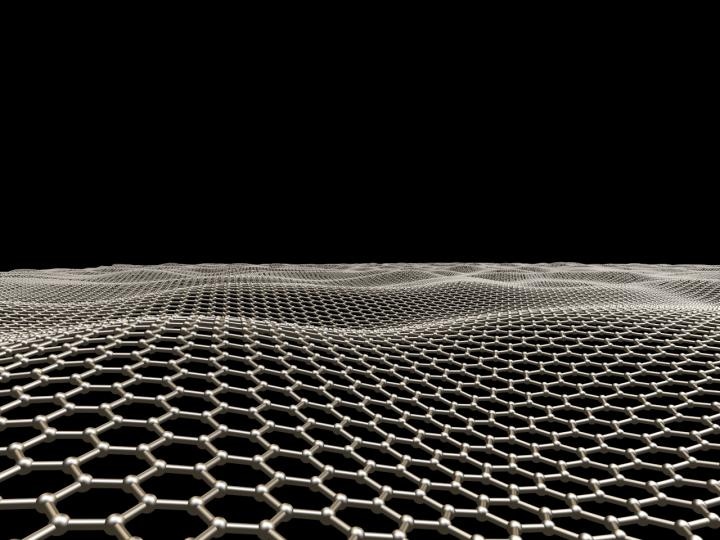Jun 20 2019
In a recent study, a University of Oklahoma (OU) physics team offers insight into a novel Mott state seen in twisted graphene bilayers at the “magic angle”. The OU physicists demonstrate that the Mott state in graphene bilayers favors ferromagnetic alignment of the electron spins, an occurrence unheard of in traditional Mott insulators, and a new concept on the novel insulating state seen in twisted graphene bilayers.
 (Image credit - University of Oklahoma)
(Image credit - University of Oklahoma)
“We are trying to understand the nature of the Mott state in this system,” said Bruno Uchoa, associate professor in the Homer L. Dodge Department of Physics and Astrophysics. “The Mott state we proposed is an insulating state that may lead to superconductivity in some conditions, yet is different from Mott states observed in other systems. There are fundamental differences, however, and this is what we are studying.”
Mott physics has been broadly explored in the last several years in high-temperature cuprate superconductors — materials that in certain conditions can convey charge currents at fairly high temperature without causing any heat dissipation. In the Mott phase, however, the motion of charge carriers is limited by their solid mutual electric repulsion, which results in insulating behavior, when a material is incapable of conducting any electricity.
It also results in anti-ferromagnetism, a state where the spins of two electrons situated next to each other are anti-parallel. The latter property is because of the Pauli Exclusion Principle, one of the many striking properties of quantum mechanics, which defines that the two electrons cannot occupy the same quantum state. The new research reveals that the Mott state in graphene departs from other recognized examples in major ways.
Using two graphene sheets twisted at a very small angle, called the “magic angle,” the system correlates with properties observed in high-temperature superconductors. Graphene is composed of carbon and the world’s thinnest material, measuring just one atom in thickness. The material resembles a honeycomb lattice, so two layers twisted at a very small angle cause the electrons to move differently. The new research reveals that lattice limits imposed by the small twist angle can intensely favor parallel alignment of the electronic spins even when electrons are intensely repelling each other. The OU physicists suggested a novel Mott state where these electrons act in ways not witnessed before.
Twisted graphene bilayers are very promising for a variety of technological applications in nanodevices. This is a very interesting and important physical system.
Kangjun Seo, Study First Author and Postdoctoral Scientist, OU
The OU research paper, “Ferromagnetic Mott State in Twisted Graphene Bilayers at the Magic Angle,” was recently published in Physical Review Letters. The research was funded by a National Science Foundation grant.